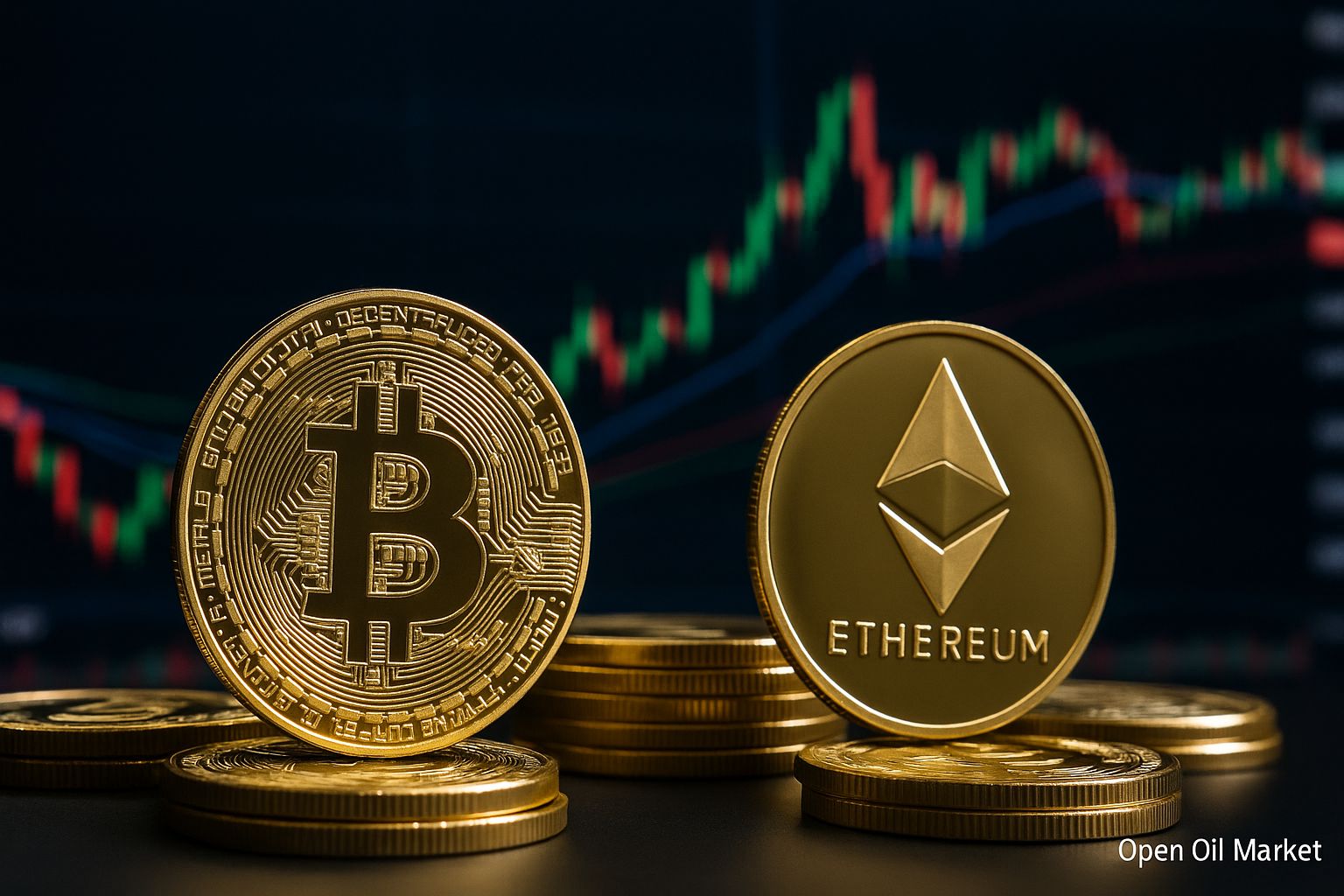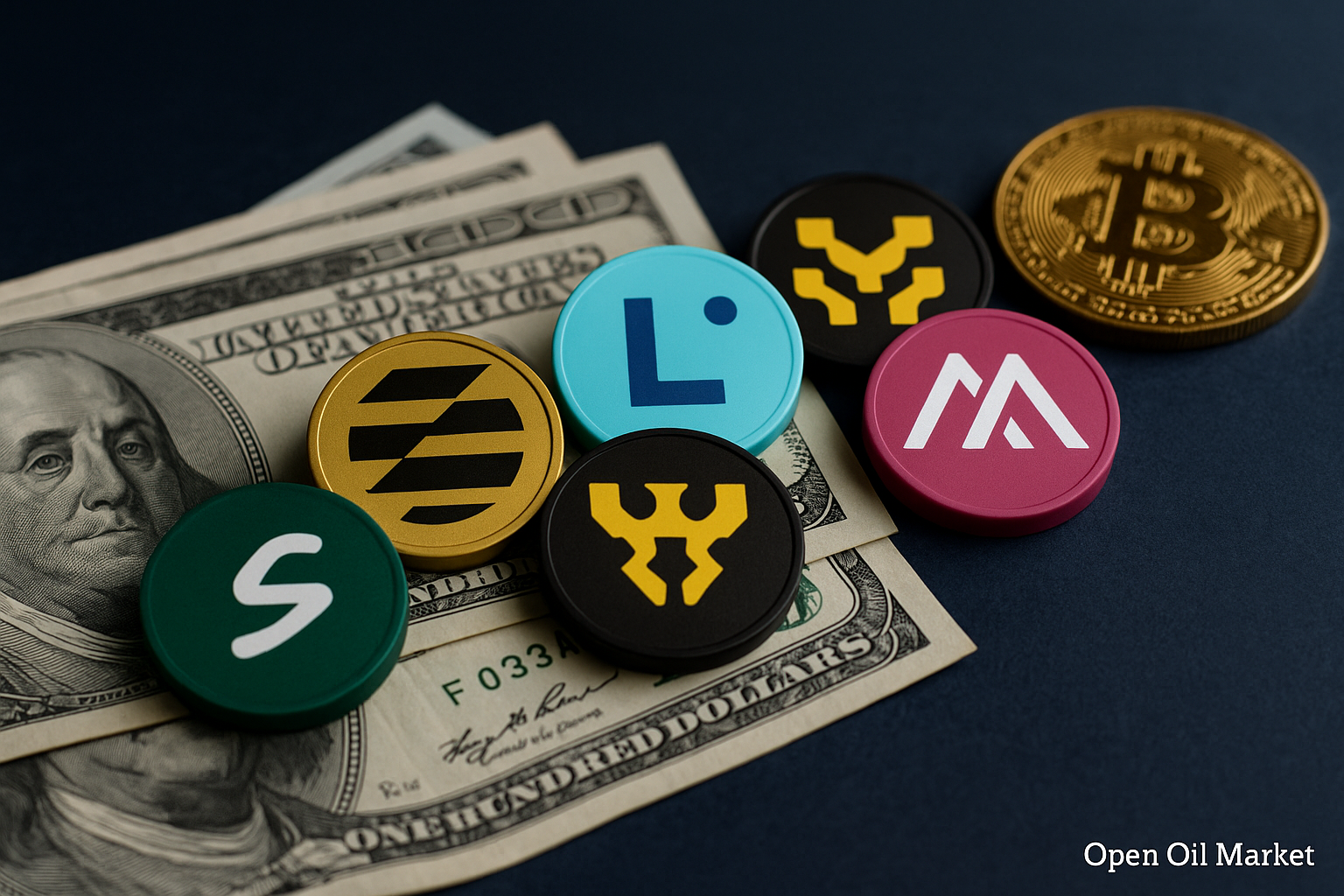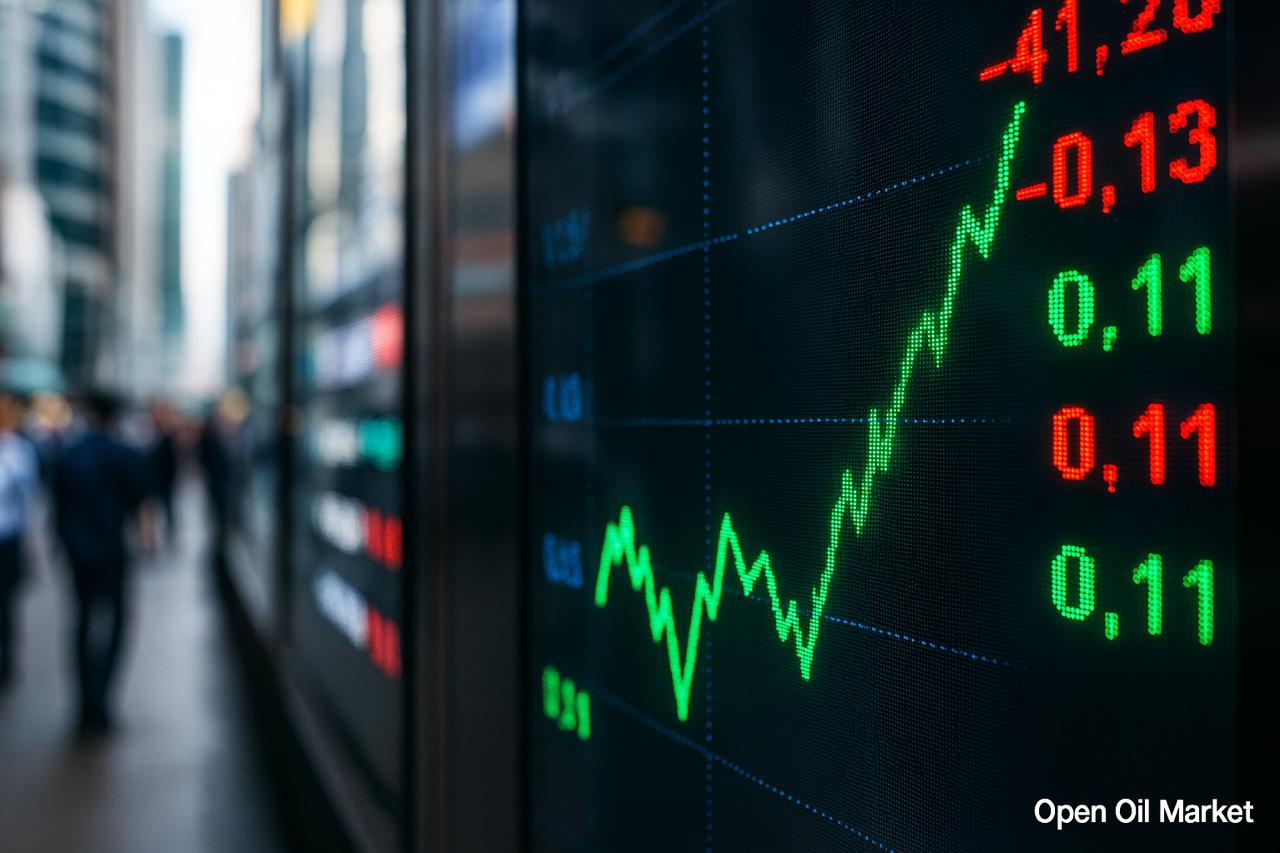
Current Cryptocurrency News as of November 6, 2025: Bitcoin Stabilizes Around $110,000 After Recent Correction, Ethereum Prepares for Major Network Upgrade, and Altcoin Market Shows Mixed Dynamics. Institutional Investors Maintain High Interest While Regulators Worldwide Are Formulating New Rules for the Industry. The Review Also Features the Latest Top 10 Largest Cryptocurrencies by Market Capitalization.
As of the morning of November 6, 2025, the global cryptocurrency market remains at elevated levels, despite the heightened volatility of recent weeks. Bitcoin reached new price peaks during the fall but has since experienced a correction, now consolidating around the $110,000 mark, significantly above the levels seen at the beginning of the year, fostering investor optimism. Many leading altcoins have also seen substantial growth over the past months. In this environment, regulatory news and signals regarding monetary policy are having an increasingly significant influence on the market: central bank decisions and legislative initiatives from various countries are distinctly impacting the industry. Below, we will examine the current situation in detail—from Bitcoin and Ethereum dynamics to institutional investor actions and regulatory steps.
Bitcoin: Holding Key Positions
The flagship Bitcoin (BTC) recently set a historical record, exceeding $125,000 before undergoing a predictable correction. At the beginning of November, the price briefly dipped to around $105,000, but quickly stabilized near $110,000. This range serves as a critical support level: maintaining BTC above ~$105,000 preserves the upward trend. The nearest resistance zone is located around $120,000—a decisive breakthrough above this level will pave the way for Bitcoin to reach new records.
The factors that drove BTC's rally remain in place. Investors are anticipating an upcoming easing of monetary policy in the U.S., with expectations that the Federal Reserve will begin lowering rates in 2025-2026, which traditionally boosts demand for risk assets, including cryptocurrencies. Institutional players continue to increase their investments through exchange-traded funds (ETFs) and other products. Regulators are also sending positive signals to the industry. However, risks remain: an unexpected rise in inflation or a sudden tightening of rhetoric from the Federal Reserve could temporarily dampen appetite for digital assets. For example, in late October, tough comments from the Fed triggered a short-term outflow from crypto funds and a decline in BTC’s price, but buyers soon returned the price to its previous levels.
Overall, Bitcoin demonstrates resilience. Long-term holders are not rushing to sell their coins, viewing BTC as "digital gold" and a hedge against inflation. Large corporations and funds continue to accumulate Bitcoin—during the recent price decline, they collectively added thousands of BTC to their balances, capitalizing on the dip. Such capital influx from "big players" supports the market and indicates that the current bull cycle is far from over.
Ethereum: Upward Trend Ahead of Upgrade
The second-largest cryptocurrency by market capitalization, Ethereum (ETH), has been on a steady rise throughout 2025, keeping pace with the market. Earlier in the week, the ETH price hovered around $4,000, although it briefly dipped below $3,600 in early November amidst the overall correction. Currently, Ethereum is trading in the ~$3,800–4,000 range, with its market cap exceeding $450 billion (approximately 12% of the market). Despite recent fluctuations, ETH has significantly strengthened since the start of the year and is nearing multi-year highs (the historical peak of approximately $4,867 was reached in 2021).
The growth of Ethereum is supported by both high institutional demand and fundamental factors. This year, investors have poured record amounts into funds and ETFs based on Ether, with capital inflows into these products outpacing those of Bitcoin funds. One reason for the optimism is the anticipation of the launch of the first spot ETF on Ethereum in the U.S.: if regulators approve it, access to Ethereum will broaden for a wider range of investors, potentially propelling the price to a new growth phase.
Moreover, the Ethereum ecosystem continues to evolve. A major network upgrade is scheduled for early December, aimed at reducing fees and enhancing security—this technological factor is attracting market attention. Overall, Ethereum remains a key platform for thousands of decentralized applications (DeFi, NFT, etc.), and following its transition to Proof-of-Stake and the implementation of a deflationary issuance model, many investors view ETH as a promising asset. All of this fuels expectations that Ethereum will soon exceed the $4,600 mark and approach its historical high.
Altcoin Market: Mixed Trends
The broader altcoin market has also shown growth in 2025, although volatility within this segment has increased. Following Bitcoin's rally, investor interest has partially shifted to altcoins, many of which previously experienced sharp price jumps followed by corrections. Consequently, the dynamics among leading altcoins are now heterogeneous: some tokens are holding around multi-year highs, while others have retreated from their peaks.
For instance, XRP surged above $3 (its highest since 2018) following Ripple's legal victory over the SEC; BNB soared to around $850 amid increased activity on Binance; and Solana is holding steady around $180 due to the launch of the first ETF. Meanwhile, some coins (such as Cardano and Dogecoin) have significantly decreased from their summer peaks. Nevertheless, interest in alternative cryptocurrencies remains high, especially for projects with active ecosystems and positive news.
Institutional Interest at Record Levels
Major banks, funds, and corporations invested unprecedented amounts of capital into digital assets in 2025, resulting in a record influx of funds into crypto funds and the launch of exchange-traded ETFs. In late October, profit-taking occurred on a short-term basis, with investors pulling out over $1 billion from spot Bitcoin and Ethereum ETFs, temporarily lowering prices. However, the largest players soon returned to purchasing on dips, and the total volume of institutional investments since the start of the year is approaching record levels. This influx of capital creates a solid foundation for the market and reinforces expectations of a continued bull cycle.
Regulation and Integration: A Global Overview
Regulators around the world are increasingly establishing rules for the crypto industry. In the U.S., steps are being taken to create a comprehensive legal framework: Congress is discussing laws regarding digital assets, while the new leadership at the SEC is easing its approach (court disputes with exchanges are winding down, and clear criteria for tokens are being developed). In the European Union, the Markets in Crypto-Assets (MiCA) regulation has come into effect, introducing uniform requirements for the operation of crypto exchanges, wallets, and token issuers.
Other regions are also integrating cryptocurrencies. China is utilizing the Hong Kong financial platform to launch its first regulated stablecoins pegged to the yuan; in Latin America, Brazil's parliament is discussing the idea of including Bitcoin in national reserves (up to 5%); and in Russia, internal control is strengthening (banks are blocking suspicious cryptocurrency transactions, and measures against illegal transactions have tightened) while concurrently pursuing the development of a digital ruble (launch expected in 2026). Thus, states are gradually integrating digital assets into the financial system through clear regulations, reducing risks for investors and acknowledging cryptocurrencies as part of the global economy.
Top 10 Most Popular Cryptocurrencies
- Bitcoin (BTC) — ~$110,000 (≈55% of the market). The first and largest cryptocurrency. Limited issuance (21 million coins) endows BTC with properties akin to digital gold. Used as a store of value; demand remains high.
- Ethereum (ETH) — ~$4,000 (≈13% of the market). Leading smart contract platform (the basis for DeFi and NFTs). Transition to PoS and a deflationary issuance model have strengthened ETH's position as a high-tech asset.
- Tether (USDT) — ~$1.00. The largest stablecoin, pegged to the U.S. dollar. Key source of liquidity in the crypto market, allowing for rapid "parking" of capital between trades.
- Binance Coin (BNB) — ~$800. The token of the Binance exchange ecosystem (BNB Chain). Used for fee payments, accessing services, and participating in DeFi projects. Despite regulatory pressure, BNB remains in the top 5 due to its broad application.
- USD Coin (USDC) — ~$1.00. The second largest stablecoin (issued by Circle and Coinbase). Fully backed by dollar reserves and regularly audited, making it one of the most reliable digital assets.
- XRP (Ripple) — ~$3.0. The token of the Ripple network for quick international transfers. In 2025, XRP exceeded $3 for the first time since 2018, thanks to Ripple’s victory over the SEC and expectations of an ETF launch. It attracts banks and funds as an efficient tool for cross-border settlements.
- Solana (SOL) — ~$180. A layer 1 blockchain known for its high transaction speeds and low fees. SOL sharply gained value due to ecosystem expansion (DeFi, NFTs) and the launch of the first ETF based on Solana.
- Cardano (ADA) — ~$0.80. A blockchain platform using a PoS algorithm and a scientific approach to development. Although ADA's price is far from records, the coin remains in the top 10 due to its large market cap and active community.
- Dogecoin (DOGE) — ~$0.22. The most well-known meme cryptocurrency, having become one of the largest by market cap. Used for microtransactions and internet tipping. Thanks to its devoted community and occasional surges in hype, DOGE maintains a leading position, though it is characterized by high volatility.
- TRON (TRX) — ~$0.35. The token of the Tron platform, oriented towards decentralized services and content. It has strengthened due to increased network utilization for stablecoins and asset tokenization. Low fees and high throughput have helped Tron enter the list of the top cryptocurrencies.
In summary, as of November 6, 2025, the cryptocurrency market is displaying mixed dynamics. Fundamental factors and the influx of institutional capital remain positive, while major coins hold crucial levels. However, short-term economic and regulatory uncertainty prompts investors to exercise caution. In the coming days, market participants should closely monitor the movements of leading cryptocurrencies and news regarding possible new ETF launches to timely react to changes in trends.




